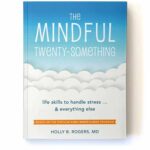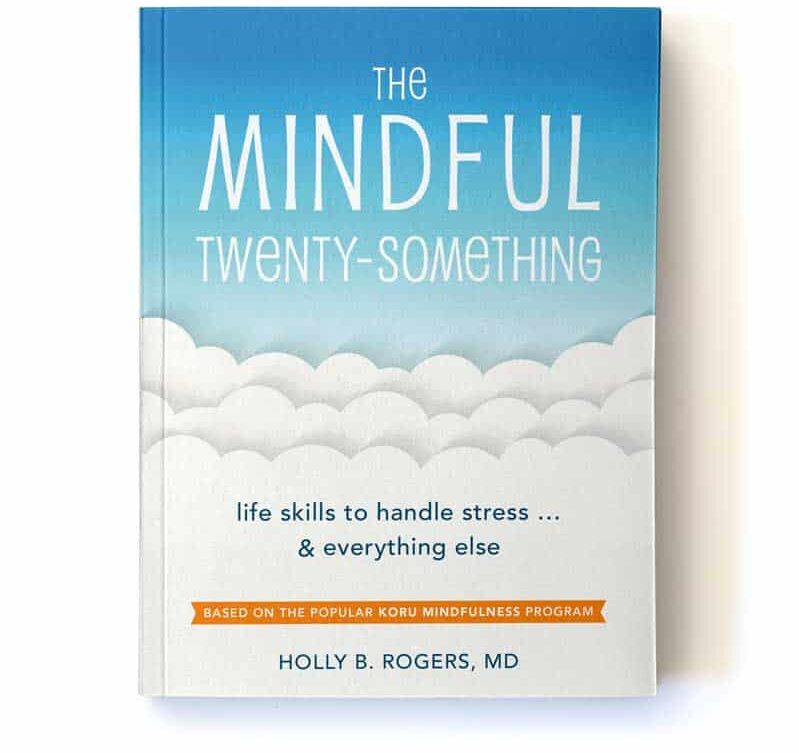SYLLABUS
Intro to Mindfulness
Your comprehensive class outline for our introductory mindfulness class (aka Koru Basic).
Welcome!
During this class you will be introduced to the practice of mindfulness and learn several skills, including meditation, for managing stress and enriching your life. Mindfulness is about developing the ability to be fully attentive to all the moments of your life, reducing the amount of time you spend worrying about the future or fretting about the past. An important aspect of mindfulness is developing a non-judgmental, accepting, even curious, attitude about your moment-to-moment experience. The more you develop this attitude, the less you will feel overwhelmed by changes and challenges in your life.
Intro to Mindfulness is designed to introduce you to the practice of mindfulness and get you well on your way to developing this important skill. Like learning any new skill, it takes practice to get comfortable with mindfulness. We invite you to devote yourself to the study and practice of mindfulness over the next four weeks, and we challenge you to stay curious about what evolves for you as you persistently and patiently practice living mindfully.
The Koru Mindfulness App
The Koru Mindfulness App is an important companion to this class. The app provides a meditation timer, guided versions of all the skills you will learn in class, and key concepts from the book. Importantly, the app is where you will complete your log of your meditation sessions and receive guidance from your teacher as you progress. The app is available in the Google Play and Apple app stores.
Don’t have access to the student mobile app?
Some requests
- Please let your teacher know if you won’t be able to attend a class.
- Please turn off cellphones for class.
- Please be punctual. We will end class promptly at the scheduled time.
In order to deepen your learning, we are asking you to:
- Practice a skill/meditation for at least 10 minutes every day.
- Use the Koru app to submit your meditation log each day. No app? No problem!
- Read the assigned chapters in the book.
Reading
The text is The Mindful Twenty-Something by Holly Rogers and is available at local stores or online. Please read the following:
- By class 1: Parts 1-2
- By class 2: Part 3
- By class 3: Part 4
- By class 4: Part 5
The classes and homework practice
In each class you will learn one or two mindfulness-based skills and you will practice meditation with the help of your instructor. You may use any of the skills or meditations we teach for your daily ten minutes of mindfulness practice. Typically, you will practice with skills during the week after we learn them in class. However, the goal is not for you to become an expert at all the skills. Rather, the goal is for you to find one or two mindfulness practices that resonate with you, and work with those practices in greater depth. Everyone is different and will find different practices more or less helpful. Your task is to identify the skills that work for you and to spend your time developing as best you can your ability to use those skills.
Connect with us on Instagram:
Tips to get you started:
The First Class
Belly or Diaphragmatic Breathing
Belly breathing is a calming skill that you can use to calm yourself if you are feeling anxious or to quiet your mind to help with sleep. You will be taught to breathe deeply, inhaling by using your diaphragm to push your stomach out rather than using the muscles of your chest wall to fill your lungs.
Dynamic Breathing
Dynamic breathing is a very active skill that you can use if you are restless, anxious or tired, and need to a way to focus your attention and energize your body. Students use dynamic breathing when they are tired or worried and still have lots of work to finish.
Body Scan
In this meditation you will learn to use physical sensations in the body to anchor your awareness in the present moment.
The Second Class
Walking Meditation
When practicing walking meditation, you use the sensations in your feet as you slowly walk as your anchor to the present present-moment. Walking meditation can be useful if you are either too sleepy or too restless to meditate sitting still.
Gatha
A gatha is a series of words, sometimes referred to as a meditation poem, that you use to help you focus your mind during meditation. Students use gathas when they feel very distracted and unable to settle their attention on their breath.
I know I am breathing in.
I know I am breathing out.
I calm my body and my mind.
I smile.
I dwell in the present moment.
I know this is a precious moment.
The Third Class
Guided Imagery
Guided imagery is a way of calming your body and mind if you are feeling particularly anxious or stressed. Using all of your senses, you imagine yourself in a comfortable and safe place, which allows your nervous system to quiet and calm. Students use guided imagery if they are dealing with high levels of stress or worry.
Labeling Thoughts
An important aspect of mindfulness meditation is the ability to notice your thoughts and then, without judgment, release them, returning your attention to your object of meditation, most commonly the sensation of your breath as it enters and leaves your body. Labeling is a technique that makes it easier to release your thoughts and return to your present moment experience. Students use labeling to strengthen their ability to stay non-judgmentally present with the goings-on in their busy minds.
The Fourth Class
Eating Meditation
With eating meditation, you learn to pay very careful attention to all of the sensations involved in eating, as well as the thoughts and feelings you have when you eat. Eating meditation enhances the pleasure in eating and allows you to consume your food in a healthier way, listening to the reactions and needs of your body.
Labeling Feelings
This meditation builds on the labeling practice from last week, providing you a skill for managing strong feelings that may arise during meditation. Sometimes identifying the feelings that are underneath persistent or recurring thoughts can be very helpful, keeping you from getting carried too far away from the present moment.

























